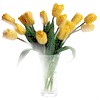
For amateurs
this is a very good money saving idea. Try to stick with
film that has been refrigerated and try not to buy film
that is too outdated (over 1 year). Whether or not the
film is good depends on the batch and how it was taken
care of before it got to you. I recommend buying 1 role
and seeing how the pictures turn out. If everything is
okay go ahead and buy some more film from that batch --
make sure it has the same exp. date and etc. I greatly
advise you to refrigerate this film to help it last
longer. I'm sure that this advise is against what most
photographers would say, but I've done this and have had
luck.
![]() NY
Institute of Photography
NY
Institute of Photography
![]() Image
Crafter
- Offers nature photography
tips and tricks and has some nice images
Image
Crafter
- Offers nature photography
tips and tricks and has some nice images